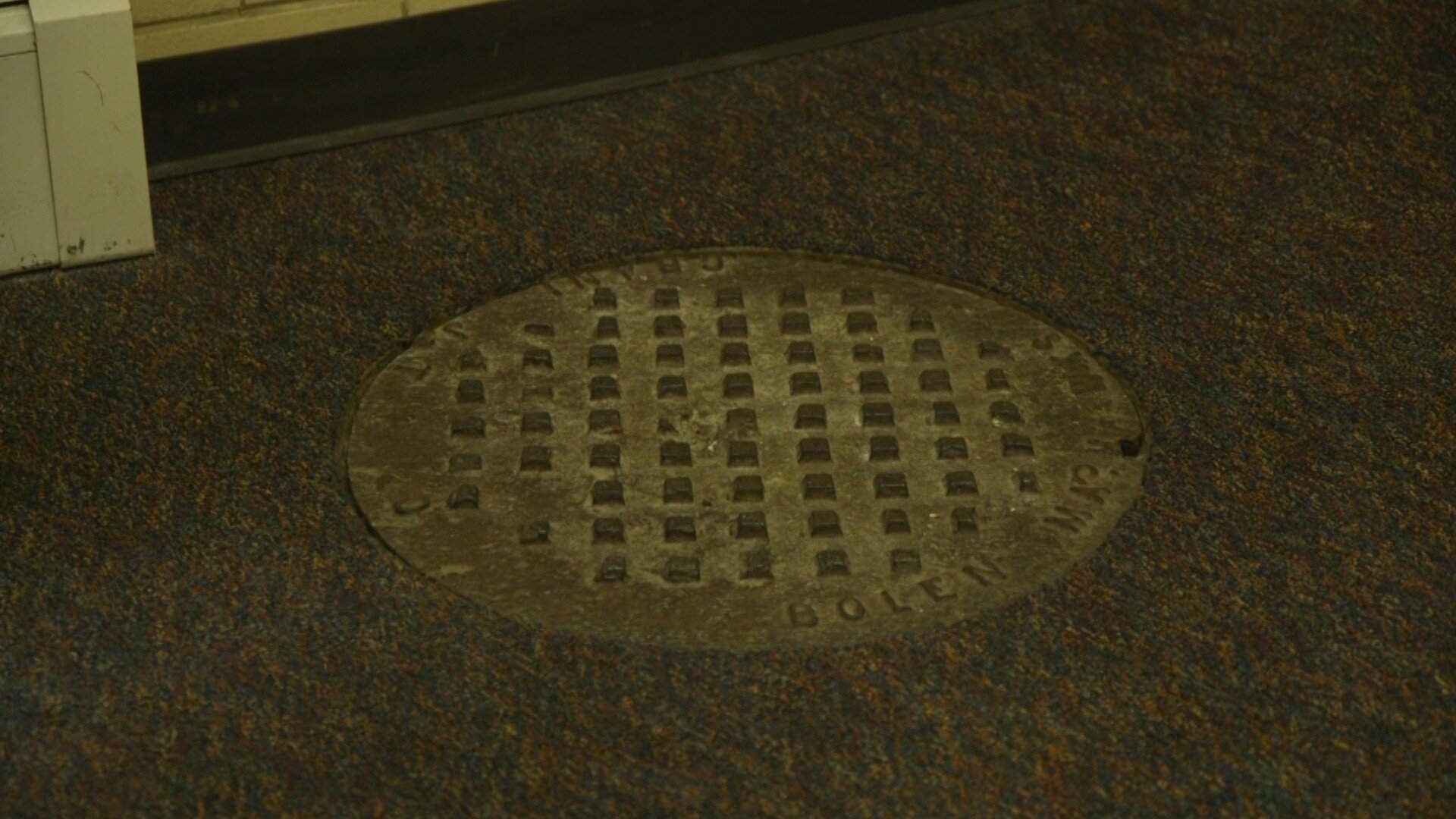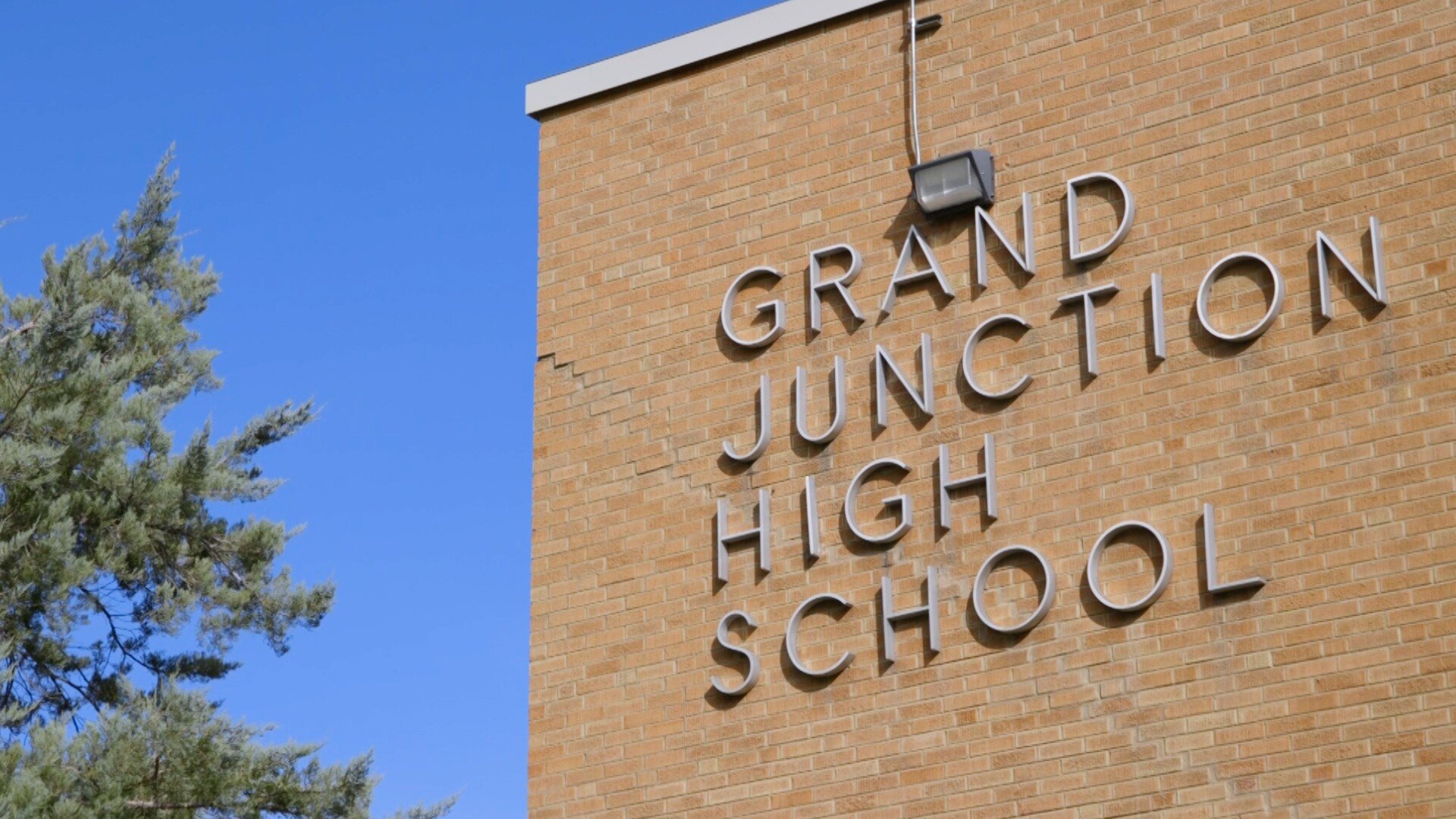Voters approve replacement for Grand Junction's 65-year-old high school building

Update: Supporters of ballot measure 4B in Mesa County scored a decisive victory on Election Day, with about 65% of voters voting in favor replacing Grand Junction High School's 65-year-old building.
"An investment in a new building is an investment in the future of Grand Junction High School students for generations to come," Mesa County Valley School District 51 officials wrote. "We are honored and delighted to have a community that supports our Tigers."
Construction for the new school is scheduled to begin in 2022 and should conclude by 2024. School officials said the east gym and the art building will be preserved.
Original story: GRAND JUNCTION, Colo. — The community of central Grand Junction may finally be getting the school it has been asking for.
For years, students at Grand Junction High School (GJHS) have had to miss labs, hunker down in shelter-in-place exercises, and even face ridicule from other schools because of the age of their main building. Two years since the last attempt at rebuilding the school, many are hopeful that their dream of a new building will soon become reality.
In 2019, voters had the chance to approve a bond measure of $179.5 million to pay for GJHS’s new building and other projects in the town. But the ballot measure failed to pass, with many voters weary about the price tag.
This year, on ballot measure 4B, voters can approve a cheaper, $115 million bond aimed solely at replacing GJHS. For many of those who work and study at the school, wiping the slate clean is the only way to move forward.
“We can't even bring parts of the building up to code even if we wanted to and we had the money to,” GJHS Principal Meghan Roenicke explained. “It becomes a waste of money.”
On a tour of the campus, Roenicke told Rocky Mountain PBS that the school's AP physics classroom, which is held in an adopted car shop garage, would take millions to bring up to code. Aside from confusing light switches, poor ventilation, and structural issues found around the campus, the most concerning aspect of the school's design has to do with safety.
Grand Junction High School has more than 70 entrances and exits on campus, three of which regularly confuse visitors who are looking for the main entrance. Some doors are just feet away from parking spaces, while others open to areas that do not offer adequate space for emergency evacuations.
The day Rocky Mountain PBS toured the campus, a student had a medical emergency at one of the detached classroom buildings. The school had to go into shelter-in-place so an ambulance could drive on walkways to park next to the building.
“It's not just about a building collapsing,” Roenicke said, “Students have to cross a city street to get to some of their classes and that building itself doesn’t even have walls in portions of it. If we ever need to go into a lockdown, one teacher actually has to go out into the hall and flip the breaker on the fuse box to turn off the lights on that side of the campus.”

Grand Junction’s aging high school has been a point of concern for students and parents alike for many years. The school’s main building was originally constructed in 1956. In the decades since, the school has seen a variety of add-ons, but maintenance has been a constant. The wrestling gym, for example, is currently closed to install structural pilings, a process that eventually exposed asbestos in the walls and ceilings inside of the gym.
Though the faculty has done its best to adhere to the needs of its young learners, some locals say that the building still hasn’t changed much.
“From a facilities standpoint, it’s the exact same high school that I went to 30 plus years ago. Really, nothing’s changed,” said Jason Stanfield. “Probably a fresh coat of paint here and there but for the most part, it looks exactly as it was then.”
Stanfield, who graduated from GJHS in 1988, originally moved to the valley at the age of three. After studying at the University of Southern California and having his first child, Stanfield returned to the city where his 17-year-old son Jake now follows in his footsteps. Jake, a member of the GJHS basketball team, says that other schools make fun of them for their aging facility.
“Grand Junction High School gets a lot of crap from other schools just because our building is extremely outdated,” Jake said, “I think that’s kind of a red flag for some people coming into high school, just because having such a poor building kind of pushes people away.”
For Jason, this was a moment of shame.
“It’s one thing to be competing against these kids,” Jason replied, “but to have them making fun of your school, it's disappointing as well.”

Citizens for School District 51, former CMU President Tim Foster, Palisade Mayor Greg Mikolai, and Mesa County Commissioners Janet Rowland and Cody Davis have all campaigned to create a safer and healthier educational experience through the rebuilding of GJHS. They hope that more precise ballot language and a single-issue question, along with a lower price tag, will be enough to sway votes in their favor come November 2.
The November ballot issue 4B allocates $144.5 million to the project: $29.5 million would come from grants and leftover funds from the 2017 school bond and the remaining $115 million would come from taxpayers. The monthly tax has been estimated to equate to less than $3 per month for a home valued at $300,000. Should the new school be built, any remaining funds would be used to repay the bonds and once completed, the property tax will expire.
“Just having conversations with some of my friends and some of my peers, I think we’re very ready for a new high school,” Jake said. “To see a generation of new Tigers learning in a place where they don’t have to worry about asbestos, faulty fire alarms or structural issues — that’s really exciting.”
Matt Thornton is a multimedia journalist at Rocky Mountain PBS. He is based in Grand Junction. You can contact him at matthewthornton@rmpbs.org.